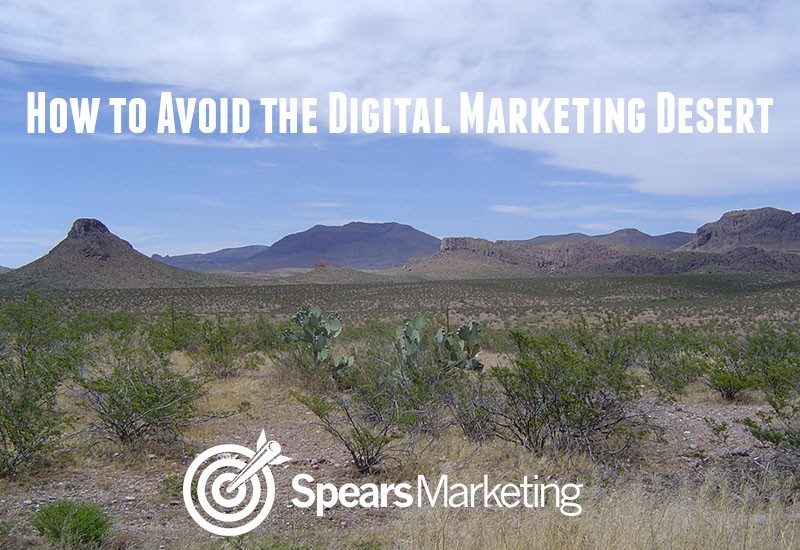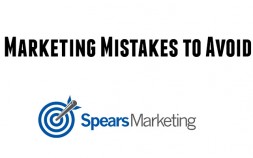In the last few years, the marketing landscape has changed. Drastically. Changes in buyer habits due to technology advances such as: Google, smart phones, social media, podcasts, and readily available or broadband internet access and wifi are the primary causes. But you knew this already, right?
As a marketing strategist to small business owners and bloggers, I see the same digital marketing mistakes business owners make over and over, usually out of ignorance, but sometimes by taking shortcuts that don’t work. It’s quite unfortunate, as with a little advance planning, they could save thousands of dollars, and more importantly, hours of time.
How to Avoid These Digital Marketing Mistakes
So to help you from making these same mistakes, here are the top five digital marketing mistakes many bloggers and business owners make, and how you can avoid them.
Poor Website Design, Structure, & Content
In the rush to get their business online, many small business owners throw up a website as quickly as possible, but neglect the three most important aspects of any site: visually appealing design, ease of navigation, and quality content.
Your website is your online home. It’s where everything else flows from. Therefore it has to be an accurate portrayal of your business. It should be attractive, easy to use and navigate, mobile friendly, and have high quality information that visitors need, and want to read. It also should be updated regularly.
Your website is a direct extension of your business. It’s highly likely that your site is the first thing a potential customer will see when deciding to do business with you. You never get a second chance to make a good first impression, so what kind of impression is your site leaving with first time visitors?
Design: Your business website should not look like it was created with Microsoft FrontPage 15 years ago. It needs to reflect today’s web standards and capabilities, including mobile responsive design and HTML5 & CSS3 standards.
Structure: Your website needs to be easy to navigate, so that visitors have a consistent experience on every page of your site. If I visit your site and have to click the “back” button to return to the homepage, I’m more likely to click the “x” button. Then I’ll go visit your competitor’s site instead.
Content: The information presented on your website needs to answer questions that potential customers are asking. First would be: who you are, what you do, your products/services offered, and how to contact you, at a bare minimum.
Without all of these aspects in place, you are giving a negative first impression to potential customers, and definitely losing business because of it.
Lack of Basic Search Engine Optimization
The way most people use the web is to go to Google (probably via their phone), type in the keyword or phrase they’re looking for, and click on the first result. Even if they know the URL of a business they’re interested in, many will still let Google do the work for them, instead of simply typing it in the address bar. Because of this, every website MUST have some basic on-site search engine optimization.
SEO is both technical, and creative. That is one of the reasons why companies whose websites are at the top of searches opt for professionals SEO companies to help them out. I would recommend you dop the same and visit https://www.agencybacklinks.com/fully-managed-seo/ to find the best SEO packages which can help your business. The technical stuff (html semantic markup, site maps, schema data, meta info, etc.) should be set up correctly when your site is first built, but the ongoing content that will provide the best results will be up to you. Get some basic training or check out a tool like Scribe to help your site rank better.
The single most important aspect of SEO (search engine optimization) is the title tag, what you see at the top of your browser when you are on a particular webpage. The title tag tells Google what that particular page is about.
If the title tag of your homepage says “home” your site does not have an optimized title tag! (If you’re not in the ‘home’ industry, you probably don’t want to rank for that term.) Your title tag should include the keyword or phrase a potential customer would most likely search for, along with the name of your business. For example, the title tag of this post looks like this:
Secondly, each page of your site must have a specific meta description. This is the information that Google (and other search engines) will show below the link to your site in the search results. While the meta description doesn’t directly affect your site’s Google ranking, it will have a huge affect on whether someone clicks through to your site or not, as it explains what the page is about. (Click here to see what the Spears Marketing meta description looks like to Google.) Without it, the big G will pull whatever information it feels is most relevant to the page, without your input. Since you know your business, it’s probably a good idea for you decide what info you want to show up.
Get these two elements correctly in place, and your content will rank higher for your chosen keywords, and potential visitors will be more likely to click through to your site.
Using Social Media as a Broadcast Medium
The web has changed marketing. No longer can you simply broadcast your message to the masses and hope your intended customer will see/hear/respond to it. Social media has fundamentally changed all that. Now, past, current, and future customers have a way to communicate with you.
Social media is not for push/outbound marketing. It’s for pull/inbound marketing. Customers have a voice, and they will block out boring ads. Social media should be used equally for marketing, public relations, customer service, and entertainment. If it doesn’t have a mixture of all 4 of these, it will be ineffective and customers will tune it out.
If you have a Facebook page for your business, yet don’t allow comments on the wall for fear of what someone might say, you’re using Facebook to broadcast. If you tweet out a daily special or promotion, yet never follow anyone back or check your @ replies, you’re using Twitter to broadcast.
Social media is a dialog, not a monologue. It’s (should be) a back and forth conversation between you and your customer (or future customer). If that scares you, good! It means you’ll work harder to provide a valuable user experience. It also means that customers will be choosing to do business with those who listen to them, rather than just advertise to them. Social media is to business communication right now what the telephone and fax machine were 20 years ago. Ignore this tool and those using it will ignore you.
The best way to use social media is to think of it as a four-spoked wheel: one-forth marketing, one-forth public relations, one-forth customer service, and one-forth entertainment. Treat it like such and your customers will love and thank you!
Lack of Consistency
Your web presence can be one of your biggest marketing assets, but the key is consistency. Just like any other area of business, you have to set expectations and live up to them.
Digital marketing, just like any other business activity, is the most effective when used consistently, blogging regularly, consistent social media usage, adwords, etc. Consistency is the key. If you try it for a month, then quite, you’ll never see results. Do the right things, long enough, consistently, and you’ll win.
If your website has a blog, (and it should!) update it regularly. Whether that is once a month, once a week, or every day, be sure to keep it consistent, as your visitors will have an expectation, and if that expectation isn’t met, they’ll begin looking somewhere else for what you offer. If you can only spend an hour each day, say from 8:00-9:00 AM, on social media, that’s fine, but set the expectation upfront and live up to it.
If a new customer were to walk into your office and you had Christmas sales banners prominently displayed in February, they’re probably not going to take your business very seriously, no matter what your excuse. The same holds true with your web presence.
Keep your website updated. Be consistent in your social media usage. Treat it as another aspect of your regular business activities and your customers will get to know, like, trust, and buy from you regularly!
Not Building an Email List Right Away
If you’re relying on Google, Facebook, or any other means of traffic generation to bring in business to your site, you’re betting on borrowed time. If you start collecting email addresses from past and potential customers, you don’t need to worry whether or not people are visiting your site, you still have a way to contact them. Obviously I’m not suggesting you spam those who are gracious enough to join your list, but you need to send them consistent, quality information.
The best way to begin building an email list is use an email marketing & auto responder service such as Convert Kit, and add their signup form at the end of each blog post. That way, if someone finds your content valuable, they’re highly likely to subscribe to get all your latest updates.
Which of these mistakes are you guilty of? What steps have you taken to correct them?


